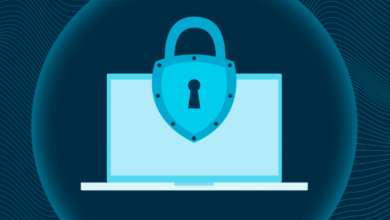How to Implement NIST 800-171 Controls Without Breaking The Bank

Government agencies hold massive amounts of sensitive data, and safeguarding it is important for national security. Even a slight data breach has huge consequences that spread beyond the agencies, impacting the safety of the entire country.
This is why cybersecurity is non-negotiable when it comes to transacting with these agencies; it’s a matter of national defense.
Thankfully, you don’t need to reinvent the wheel when it comes to securing sensitive information—NIST has already laid the groundwork. And as long as you operate within the defense industrial base, adhering to these requirements is mandatory for compliance and crucial to securing contracts.
While these controls are crucial for identifying and addressing vulnerabilities before hackers exploit them, implementation costs are not low-cost, and they can quickly break your budget.
So, how do you strengthen your cybersecurity to protect your organization and the data you handle and achieve compliance affordably?
This guide is here to help. Here are 6 tips on how to implement NIST 800-171 affordably.
1. Use NIST 800-171 Templates

Acing NIST 800-171 guidelines implementation requires a plan. Without a blueprint, how can you plan your budget effectively? This is where templates come in.
Templates are a set of NIST guidelines built into a document that you can follow easily. Using a pre-built NIST 800-171 compliance template can save you time and money.
If you find the right cybersecurity solution provider, you can be sure to get an excellent template that will make your work easier. A good template from a reliable provider is designed with scalability in mind, giving you a solid base to build the foundation you need. Plus, it can be customized to suit your needs better.
It also makes documentation (which is required during auditing) stress-free. As you implement it, you’ll keep a clean record of the policies, procedures, and anything done to improve security. With proper documentation, audit preparation costs drop.
2. Work on Critical Controls First
While all controls are important for achieving compliance, not all controls in NIST 800-171 have the same level of urgency. That means you can work on the urgent ones based on your security posture, risk profile, and the level of sensitivity of the data you handle.
The first place to start is with the critical measures (encryption, managing access, etc.) since they are foundational to preventing and recovering from compromise. Some of these (e.g., documentation) may not be a pressing risk but are absolutely critical for compliance.
Read also Top Tips for Securing High-Quality Used Trucks That Last
That said, you can’t become compliant overnight. This is a long process, and rushing it isn’t the way to go.
So, split the requirements and do them step by step according to your budget. 3. Take Advantage of Low-Cost Open-Source Security Tools.
There are plenty of budget-friendly security tools you can use to reduce the cost of implementing NIST guidelines.
Being open-source doesn’t make these tools inferior; when well utilized, they can help enhance your cybersecurity. One of the tools you can leverage for encryption is Let’s Encrypt, a free and automated tool. Bro IDS also works well for monitoring network activity.
You can first do a GAP analysis to identify areas that need improvement by NIST 800-171 requirements. Once you know exactly what you need, leverage free or low-cost tools to implement the guidelines.
4. Work with Affordable Managed Service Providers (MSPs)
Implementing NIST 800-171 can be pretty expensive for small businesses without the necessary financial muscles to pay for IT personnel and install the right tools. Therefore, for small businesses, outsourcing to MSPs to handle their cybersecurity needs is a wise choice.
Since MSPs offer the same services to many other businesses, they cut down the cost of operation, allowing them to offer the services affordably. And here’s the kicker: MSPs also offer tailored solutions. You don’t have to worry about their services not aligning with your needs.
Essentially, you’re getting the same benefits as an in-house team, just at a much lower cost.
5. Cut Training Costs Using Cheap or Free Resources
Organizations must routinely train employees as part of compliance with the NIST 800-171 framework. However, training your staff by hiring experts and using the right materials and tools costs money.
To reduce the cost, use free resources on cybersecurity best practices.
Fortunately, there are plenty of them, such as from NIST’s official website, free cybersecurity courses offered online, SANS Security Awareness Training, or even Cybersecurity channels on social media platforms like YouTube.
6. Monitor and Maintain Compliance

A single security breach can cost more than just money; it can permanently damage your brand’s reputation. The consequences often extend beyond financial losses; it could mean losing lucrative contracts and the trust you have built over the years, which are far harder to rebuild.
That’s why implementing NIST recommendations is crucial.
But, compliance doesn’t stop at implementation; continuous monitoring is required to ensure any issue is fixed early enough before it escalates. To do that, you need to leverage automation tools.
Although some might cost more upfront, it is worth it in the long run, especially considering the risks of not investing in them.
Conclusion
Implementing NIST 800-171 controls is not a walk in the park, especially for companies with tight budgets. Such hurdles mean you must be smart, plan well, and take advantage of cost-effective solutions to become compliant without financial strain.
The six tips mentioned above are designed to make implementing the required security controls more manageable for your organization. Yes, you don’t need to overspend; instead, invest in the right tools and use the right strategies. But if you feel stuck, don’t hesitate to ask for help from an expert.





